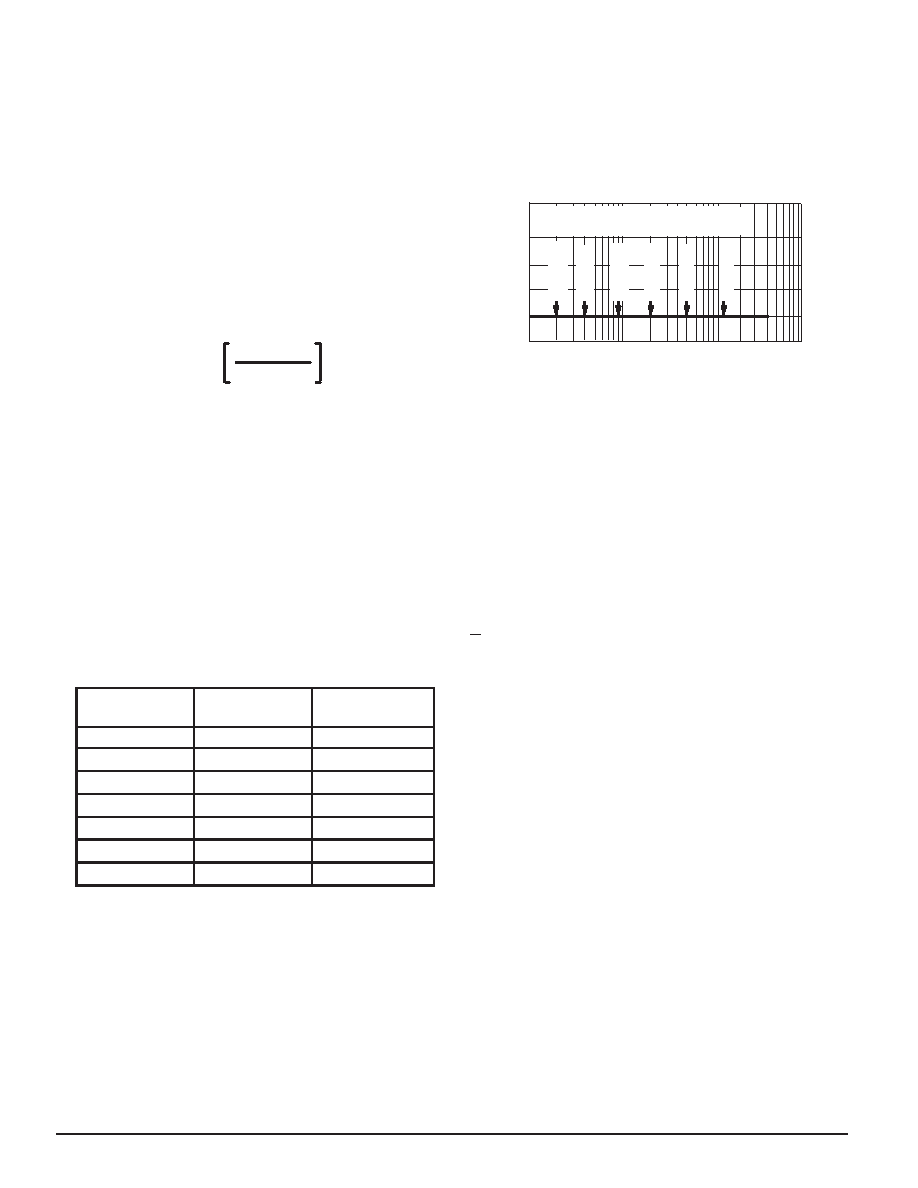- 您現(xiàn)在的位置:買賣IC網(wǎng) > PDF目錄299472 > MC74LCX00SD (ON SEMICONDUCTOR) 15 A 12-V Input Bus Termination Power Module for DDR/QDR Memory 10-DIP MODULE -40 to 85 PDF資料下載
參數(shù)資料
| 型號: | MC74LCX00SD |
| 廠商: | ON SEMICONDUCTOR |
| 元件分類: | 門電路 |
| 英文描述: | 15 A 12-V Input Bus Termination Power Module for DDR/QDR Memory 10-DIP MODULE -40 to 85 |
| 中文描述: | LVC/LCX/Z SERIES, QUAD 2-INPUT NAND GATE, PDSO14 |
| 封裝: | PLASTIC, SSOP-14 |
| 文件頁數(shù): | 15/40頁 |
| 文件大小: | 350K |
| 代理商: | MC74LCX00SD |
第1頁第2頁第3頁第4頁第5頁第6頁第7頁第8頁第9頁第10頁第11頁第12頁第13頁第14頁當前第15頁第16頁第17頁第18頁第19頁第20頁第21頁第22頁第23頁第24頁第25頁第26頁第27頁第28頁第29頁第30頁第31頁第32頁第33頁第34頁第35頁第36頁第37頁第38頁第39頁第40頁

Design Considerations
MOTOROLA
LCX DATA
BR1339 — REV 3
20
Modern plastic package assembly technology utilizes gold
wire bonded to aluminum bonding pads throughout the
electronics industry. When exposed to high temperatures for
protracted periods of time an intermetallic compound can form
in the bond area resulting in high impedance contacts and
degradation of device performance. Since the formation of
intermetallic compounds is directly related to device junction
temperature, it is incumbent on the designer to determine that
the device junction temperatures are consistent with system
reliability goals.
Predicting Bond Failure Time
Based on the results of almost ten (10) years of +125
°C
operating life testing, a special arrhenius equation has been
developed to show the relationship between junction
temperature and reliability.
(1) T = (6.376
× 10–9)e
11554.267
273.15 + TJ
Where: T
= Time in hours to 0.1% bond failure (1 failure
per 1,000 bonds).
TJ
= Device junction temperature,
°C.
And:
(2) TJ = TA + PDΘJA = TA + TJ
Where: TJ
= Device junction temperature,
°C.
TA
= Ambient temperature,
°C.
PD
= Device power dissipation in watts.
ΘJA = Device thermal resistance, junction to air,
°C/Watt.
TJ = Increase in junction temperature due to
on–chip power dissipation.
Table
1
shows
the
relationship
between
junction
temperature, and continuous operating time to 0.1% bond
failure, (1 failure per 1,000 bonds).
TABLE 1 — DEVICE JUNCTION TEMPERATURE versus
TIME TO 0.1% BOND FAILURES.
Junction
Temperature
°C
Time, Hours
Time, Years
80
1,032,200
117.8
90
419,300
47.9
100
178,700
20.4
110
79,600
9.4
120
37,000
4.2
130
17,800
2.0
140
8,900
1.0
Table 1 is graphically illustrated in Figure 14 which shows
that the reliability for plastic and ceramic devices is the same
until elevated junction temperatures induce intermetallic
failures in plastic devices. Early and mid–life failure rates of
plastic devices are not effected by this intermetallic
mechanism.
1
10
100
1000
TIME, YEARS
NORMALIZED
F
AILURE
RA
TE
Figure 14. Failure Rate versus Time
Junction Temperature
T J
=
80
C°
T J
=
90
C°
T J
=
100
C°
T J
=
1
10
C°
T J
=
130
C°
T J
=
120
C°
FAILURE RATE OF PLASTIC = CERAMIC
UNTIL INTERMETALLICS OCCUR
Procedure
After the desired system failure rate has been established
for failure mechanisms other than intermetallics, each device
in the system should be evaluated for maximum junction
temperature. Knowing the maximum junction temperature,
refer to Table 1 or Equation 1 to determine the continuous
operating time required to 0.1% bond failures due to
intermetallic formation. At this time, system reliability departs
from the desired value as indicated in Figure 14.
Air flow is one method of thermal management which
should be considered for system longevity. Other commonly
used methods include heat sinks for higher powered devices,
refrigerated air flow and lower density board stuffing. Since
ΘCA is entirely dependent on the application, it is the
responsibility of the designer to determine its value. This can
be achieved by various techniques including simulation,
modeling, actual measurement, etc.
The material presented here emphasizes the need to
consider thermal management as an integral part of system
design and also the tools to determine if the management
methods being considered are adequate to produce the
desired system reliability.
相關(guān)PDF資料 |
PDF描述 |
|---|---|
| MC74LCX02D | 15 A 12-V Input Bus Termination Power Module for DDR/QDR Memory 10-DIP MODULE -40 to 85 |
| MC74LCX02M | 0.8 to 1.8 V 18-A, 12-V Input Non-Isolated Wide-Adjust Module 10-DIP MODULE -40 to 85 |
| MC74LCX02 | 15 A 12-V Input Bus Termination Power Module for DDR/QDR Memory 10-DIP MODULE -40 to 85 |
| MC74LCX540DWR2 | LVC/LCX/Z SERIES, 8-BIT DRIVER, INVERTED OUTPUT, PDSO20 |
| MC74LCX646DTR2 | LVC/LCX/Z SERIES, 8-BIT REGISTERED TRANSCEIVER, TRUE OUTPUT, PDSO24 |
相關(guān)代理商/技術(shù)參數(shù) |
參數(shù)描述 |
|---|---|
| MC74LCX02D | 功能描述:邏輯門 2-3.6V Quad 2-Input RoHS:否 制造商:Texas Instruments 產(chǎn)品:OR 邏輯系列:LVC 柵極數(shù)量:2 線路數(shù)量(輸入/輸出):2 / 1 高電平輸出電流:- 16 mA 低電平輸出電流:16 mA 傳播延遲時間:3.8 ns 電源電壓-最大:5.5 V 電源電壓-最小:1.65 V 最大工作溫度:+ 125 C 安裝風格:SMD/SMT 封裝 / 箱體:DCU-8 封裝:Reel |
| MC74LCX02DG | 功能描述:邏輯門 2-3.6V Quad 2-Input NOR RoHS:否 制造商:Texas Instruments 產(chǎn)品:OR 邏輯系列:LVC 柵極數(shù)量:2 線路數(shù)量(輸入/輸出):2 / 1 高電平輸出電流:- 16 mA 低電平輸出電流:16 mA 傳播延遲時間:3.8 ns 電源電壓-最大:5.5 V 電源電壓-最小:1.65 V 最大工作溫度:+ 125 C 安裝風格:SMD/SMT 封裝 / 箱體:DCU-8 封裝:Reel |
| MC74LCX02DR2 | 功能描述:邏輯門 2-3.6V Quad 2-Input RoHS:否 制造商:Texas Instruments 產(chǎn)品:OR 邏輯系列:LVC 柵極數(shù)量:2 線路數(shù)量(輸入/輸出):2 / 1 高電平輸出電流:- 16 mA 低電平輸出電流:16 mA 傳播延遲時間:3.8 ns 電源電壓-最大:5.5 V 電源電壓-最小:1.65 V 最大工作溫度:+ 125 C 安裝風格:SMD/SMT 封裝 / 箱體:DCU-8 封裝:Reel |
| MC74LCX02DR2G | 功能描述:邏輯門 2-3.6V Quad 2-Input NOR RoHS:否 制造商:Texas Instruments 產(chǎn)品:OR 邏輯系列:LVC 柵極數(shù)量:2 線路數(shù)量(輸入/輸出):2 / 1 高電平輸出電流:- 16 mA 低電平輸出電流:16 mA 傳播延遲時間:3.8 ns 電源電壓-最大:5.5 V 電源電壓-最小:1.65 V 最大工作溫度:+ 125 C 安裝風格:SMD/SMT 封裝 / 箱體:DCU-8 封裝:Reel |
| MC74LCX02DT | 功能描述:邏輯門 2-3.6V Quad 2-Input RoHS:否 制造商:Texas Instruments 產(chǎn)品:OR 邏輯系列:LVC 柵極數(shù)量:2 線路數(shù)量(輸入/輸出):2 / 1 高電平輸出電流:- 16 mA 低電平輸出電流:16 mA 傳播延遲時間:3.8 ns 電源電壓-最大:5.5 V 電源電壓-最小:1.65 V 最大工作溫度:+ 125 C 安裝風格:SMD/SMT 封裝 / 箱體:DCU-8 封裝:Reel |
發(fā)布緊急采購,3分鐘左右您將得到回復。